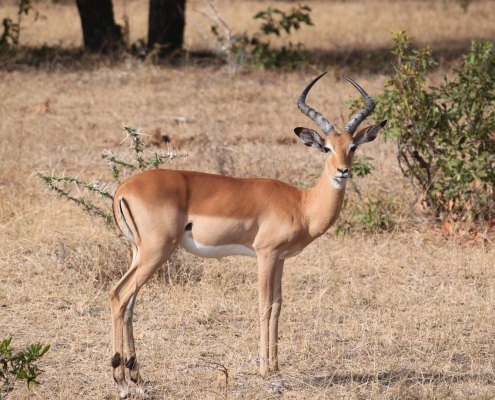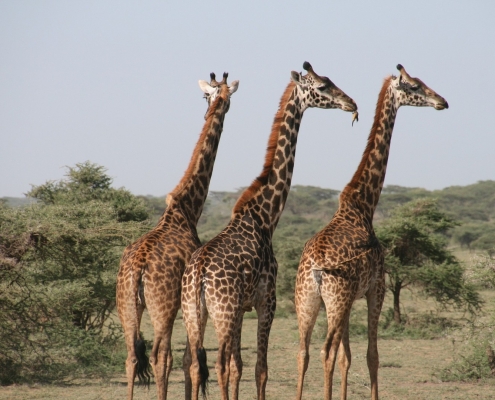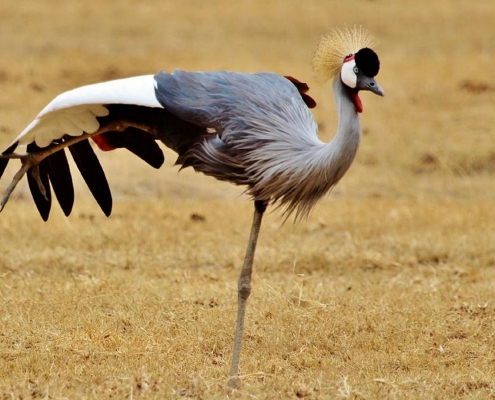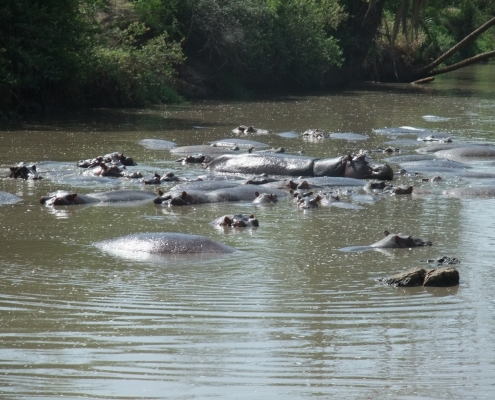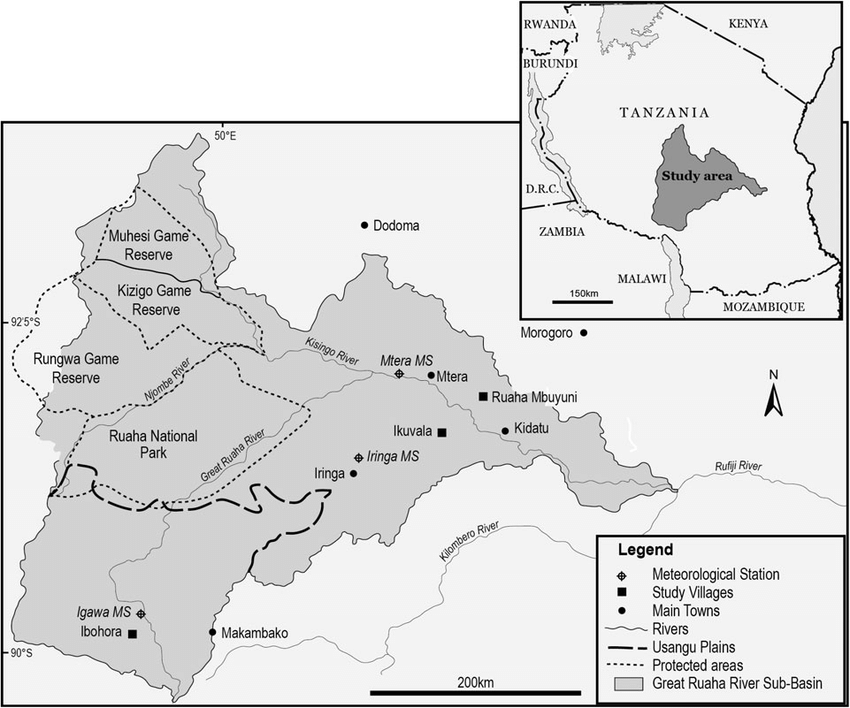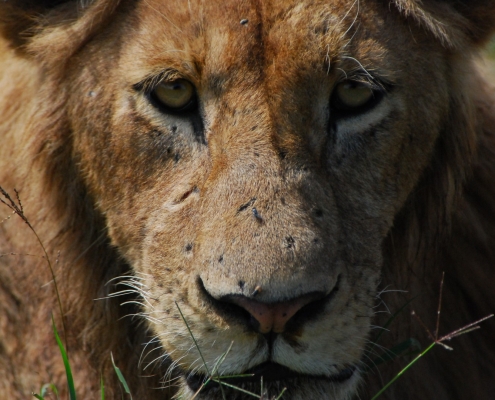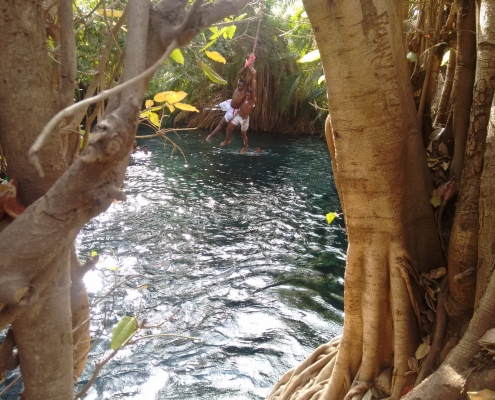Ruaha National Park
brief overview
Ruaha National Park is named after the Great Ruaha River, which meanders along its entire eastern flank between colossal boulders and sandbanks, and offers spectacular scenery with gorges of shining orange sandstone. The river attracts many animals in search of water, making this national park a great choice for game viewing. The largest national park in Africa is situated on a high plateau, with individual smaller mountains of almost 2000 metres in height.
Ruaha Park is still little visited but is one of the largest elephant sanctuaries in Tanzania. The Ruaha River is the character river of Ruaha National Park, similar to the Selous of the Rufiji River. During the dry months the wildlife is concentrated along the river, so there is plenty to see and do near the river. Large parts of the park are unexplored and for much of the year you will not see many other visitors. Bird species in Ruaha National Park include hornbills, kingfishers, sunbirds and the occasional white stork.
Facts and Figures
Area: 20.300 km²
Travel: 600 km from Arusha
Established: 1964
Visitors: 21.260 / year
Known for: Antelopes, Elephants, Sand-rivers
Activities: Gamedrives
Ruaha National Park
The history of Ruaha Park dates back to 1910, when it was declared a Saba Game Reserve during the time of German East Africa. In 1946 the British changed the name to Rungwa Game Reserve. In 1964 the southern part of the area was declared Ruaha National Park and ten years later the south-eastern part of the Great Ruaha River was included.
The name “Ruaha” comes from the Hehe word “Ruvaha” which means “river”. The Ruaha National Park is part of the Rungwa Kizigo Muhesi Ecosystem with an area of more than 45,000 km². In 2008, the Usangu Game Reserve and other important wetlands in the Usangu Basin were incorporated into the park. This makes it the largest park in Tanzania and East Africa.
Often the Ruaha and its tributaries dry up completely and you can drive through some dried up riverbeds during game drives. On these so called sand rivers there is usually still a lot going on in terms of animal density, as under the sand surface of the river there is often a water impermeable rock layer. The animals can therefore easily get their hands on the vital water. Accordingly, elephants can be seen in the area of the Mwangusi and Mdonyo Sandriver, digging water holes with their trunks and even with their clumsy feet to get to the cool water. During the rainy season (from March to May), however, in both Ruaha National Park and Selous Game Reserve, the tributaries of the Ruaha and Rufiji Rivers, respectively, will swell into huge streams, flooding the roads.
One feels like an adventurer when one does not meet any other people in such a big park in wide areas. The Ruaha has an extension of more than 20.000 km² square kilometres. You will hardly encounters other vehicles, really no comparison with the North Parks, which can be highly frequented at certain times. Wherever you look, bushes and again bushes, bushes with their yellowish barks extending up to the mountains of the Southern Highlands, which are blue-grey in the haze. Occasionally there are also smaller groups of trees and hundreds of baobab trees with their bloated bellies, their smooth, shiny bark and the crooked branches. The quite hilly and stony landscape has a very special flair.
The park is also very interesting because there are animals from East Africa as well as from Southern Africa. So it functions as an overlapping zone – with a bit of luck horse antelopes (Roan Antelope), sable antelopes, small and large kudus, maybe impala antelopes and grant gazelle can be found in this area. The diversity of antelope and gazelle species here in Ruaha is unique. The Ruaha is the southernmost area in Tanzania, where Grant Gazelles and Lesser Kudus can be found. In the plains giraffes romp around, in the bush the calls of hornbills, francolins and kingfishers can be heard. The grasses scatter their seeds to provide food for numerous birds: Cardinal weavers in mass (the most common weaver bird in Ruaha Park), fireweavers, barbecue cuckoo, bronze-winged racing bird and the Pallid Rail. The park is teeming with harlequin quails, and wherever you look they fly out of the grass.
For example, the afternoon is a good time to see the wildlife along the Ruaha River. It is the time when the game comes to water. Hippos lie lazily in the water in groups of 10 to 20 females with their young. The hippopotamus bull chases all other males out of the herd, even pubescent young bulls (7-8 years old). These then join bachelor herds or live alone. Elephants trot along the river banks, herds of buffalo have settled there; antelopes, zebras and giraffes – a constant coming and going.
But there are also many Nile crocodiles and you can watch them at the riverbanks, where they sunbathe in peace and quiet. During the game drive you get to know different habitats, which are very different: Miombo forest land and acacia groves, uneven hilly terrain, grass plains, breathtakingly beautiful granite rock formations and repeatedly dried up river beds. During the dry season the buffalo come twice a day to the remaining water holes in the riverbed. Of course lions have hidden in the bush and wait for the thirsty ones. At such a waterhole, there is a good chance to observe the natural interaction between predator and prey with your own eyes. Ruaha Park boasts the largest population of lions in East Africa. It is not uncommon to see three or four different packs in a single day.


